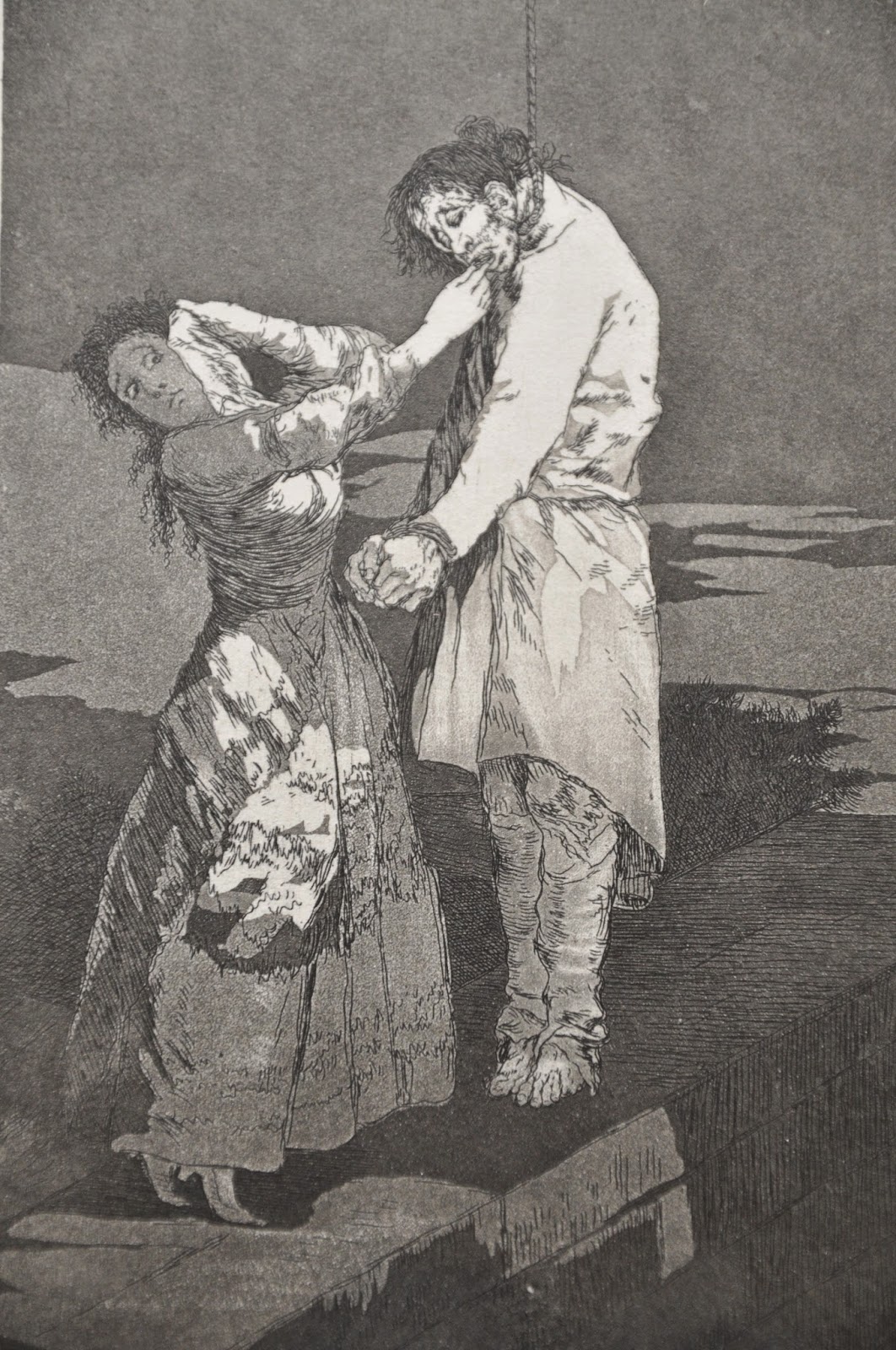I 've been to Francisco Goya's etchings exhibition at Torreão Poente, which I felt to be a unique opportunity to see the painter's satirical approach to the late 18th century Spanish nobility and clergy. The exhibit was divided into several themes, though one initial part highlighted the behavioural attitudes of Goya's fellow countrymen, whilst the other focused on the absurd depicting delirious visions and fantastic scenes with strange creatures.
The additional information provided underneath each etching was very helpful so as to allow the visitors to fully understand what each one was about, once there were details one might not either notice immediately or find out a plausible explanation for. I ended up photographing many of the 80 being in display, which I looked at as a sequence of story telling images.
Yes, they say and they offer their hand to the first comer - The young woman wearing a black mask (revealing her character rather than concealing her facial features) is seen giving her left hand to her future husband in what seems to have been a decision based on lust. A mutual mistake, as according to the man's wicked gaze there seems to be a thought mostly associated to what he can gain with the marriage.
Here comes the bogey-man. According to Goya parents who scared their children with stories of ghosts, imaginary creatures and absurd superstitions, which would naturally accompany them throughout their lives, had to be enlightened so as to change that type of educational pattern and thus bring superstition to an end.
Two of a kind. Following a dispute on whether men are better or worse than women, vices of both genders according to Goya stem from a bad upbringing. The young lady is depicted as not too different from the one who is entertaining her. As for the two old women behind, one is just as vile as the other.
Nobody gets to know one another. The world seen as a masquerade, where the facial features, the apparel and even the voices of people are disguised. Everyone seems to want to show something they are not.
Even so he cannot really get through to her. How can he? To make out what she is like a monocle is not enough - one needs discernment and a certain degree of knowledge as to what the world is like, which is what the depicted gentleman doesn't seem to have.
She was taken. The woman who isn't on guard will be possessed by the first man who grabs her.
Tantalus. If he were more gallant and less boring she would come back to life.
Love and Death. Here on can see one of Calderon's lovers. Being unable to win over his competitor he dies in the arms of his beloved, thus losing her because of his imprudence.
Out hunting for teeth. The teeth of hanged men were very effective on spell making. Without them nothing seemed to work out. According to Goya it was a shame to continue believing in such a nonsense.
What a sacrifice! How can it be with the groom not being very good-looking (yet rich). At the expense of one unhappy forever girl one hungry family will be rescued.
May God forgive her. Having left her hometown the young lady went to Madrid where she won the lottery. Down in Prado she comes across a beggar whom she refused to give money to until she recognised her mother under the filthy clothes she was wearing.
A gift for the master. They would be considered ungrateful pupils if they didn't visit their former teachers to whom they owe it all.
(To be continued)













No comments:
Post a Comment